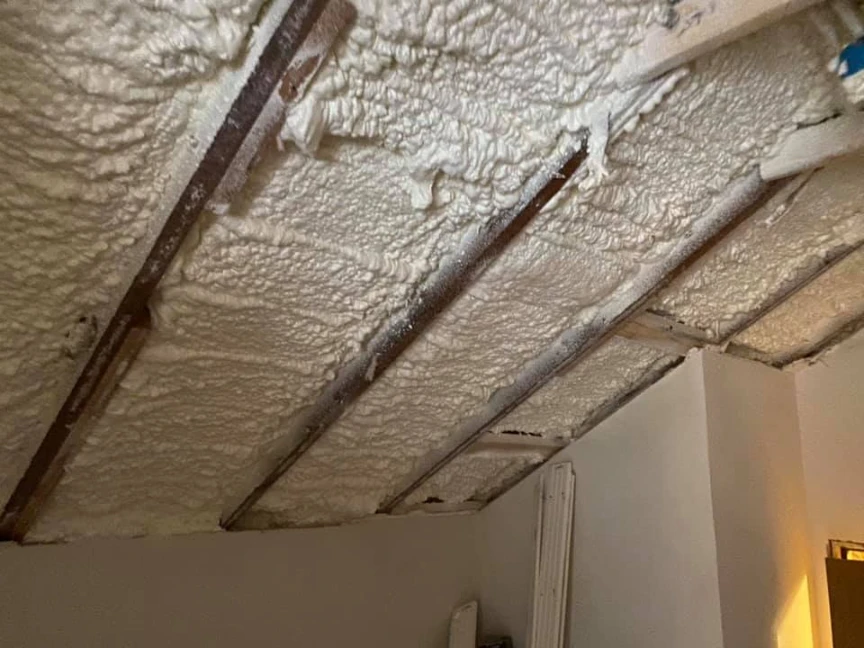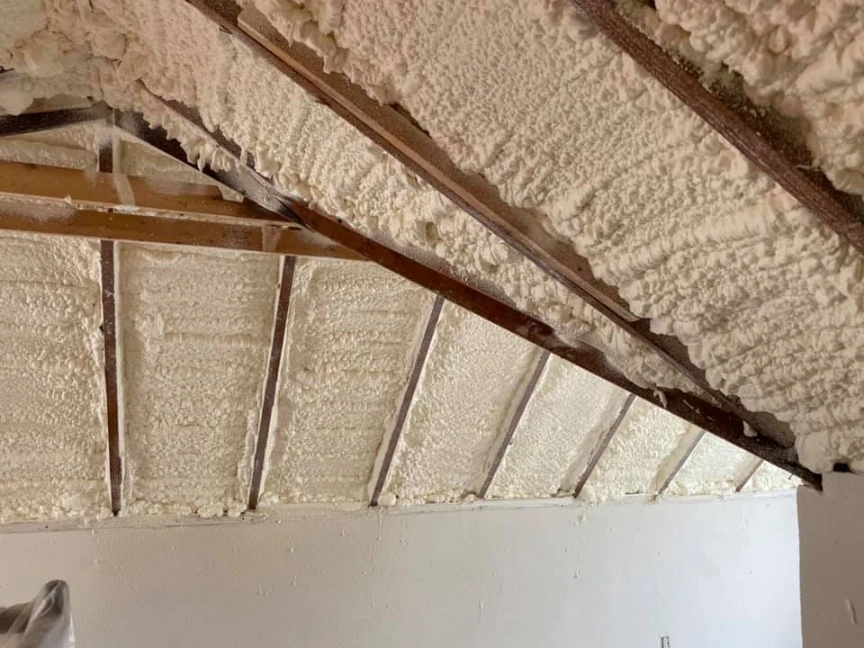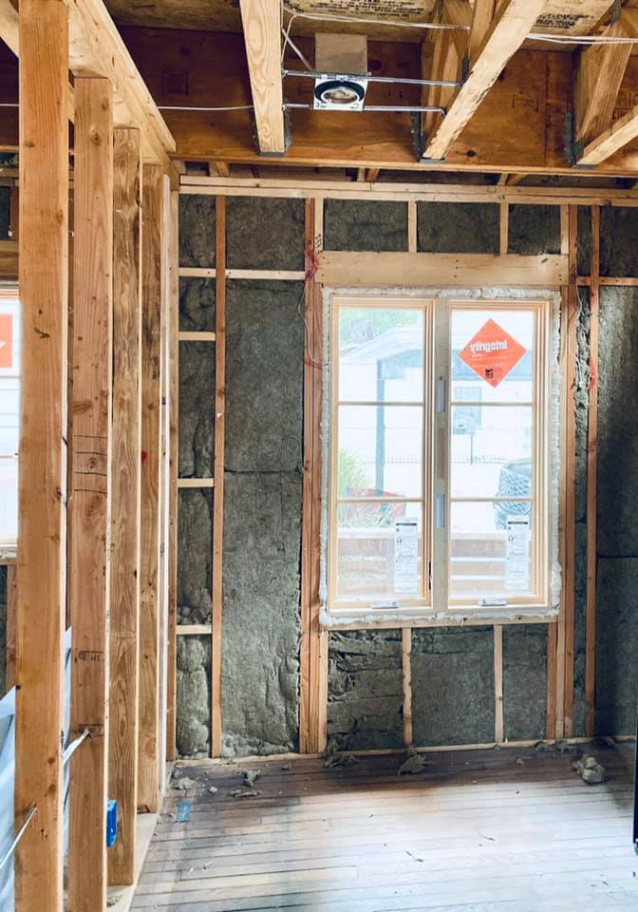Upgrading the insulation in Georgetown‘s commercial property can significantly increase its value by reducing energy costs, improving building comfort, and contributing to a more sustainable and marketable building. Enhanced insulation ensures a stable interior environment, protecting the building from temperature fluctuations and moisture intrusion, thereby reducing maintenance costs and extending the lifespan of the structure.
This article explains how upgraded insulation affects commercial property value, offering insights into insulation types, key considerations for upgrades, and frequently asked questions.
Stellrr Insulation & Spray Foam has experience in helping commercial property owners in Georgetown improve their buildings’ efficiency and value through upgraded insulation solutions.
The Financial Impact of Upgraded Insulation
Improved insulation directly affects a commercial property’s bottom line. Better insulation reduces energy consumption, resulting in lower utility bills. This is particularly attractive to potential buyers or tenants who prioritize operational efficiency and cost savings. According to the U.S. Energy Information Administration (EIA), commercial buildings account for a substantial portion of energy consumption, highlighting the potential for savings through energy-efficient upgrades.
Well-insulated buildings maintain consistent temperatures, reducing strain on HVAC systems and extending their lifespan and decreasing repair expenses. Additionally, proper insulation helps prevent moisture buildup, reducing the risk of mold growth and structural damage, which can be costly to remediate.
Bonus Tip: Consider conducting an energy audit before upgrading the insulation. This will help identify areas with the most significant heat loss and prioritize insulation efforts for maximum impact.
Types of Insulation for Commercial Buildings
Choosing the right type of insulation is essential for maximizing its benefits. Different materials offer varying levels of thermal resistance, known as R-value. The U.S. Department of Energy explains that R-value measures an insulation’s ability to resist heat flow, with higher values indicating better insulating performance. Here’s a comparison of common insulation materials:
| Insulation Type | Material | R-Value per Inch | Benefits | Considerations |
|---|---|---|---|---|
| Spray Foam (Closed-Cell) | Polyurethane | 6.0-7.0 | High R-value, excellent air barrier, moisture resistance, and strengthens the structure | Higher cost, requires professional installation |
| Spray Foam (Open-Cell) | Polyurethane | 3.5-4.0 | Lower cost than closed-cell, good sound insulation, flexible | Lower R-value, less moisture resistance |
| Fiberglass Batt | Glass Fibers | 2.2-2.9 | Cost-effective, easy to install | Lower R-value, can settle over time, requires a vapor barrier in certain climates |
| Mineral Wool | Rock or Slag Wool | 3.0-3.7 | Fire-resistant, good sound insulation, and environmentally friendly options are available | Can be more expensive than fiberglass, may require professional installation |
| Cellulose | Recycled Paper | 3.1-3.7 | Environmentally friendly, good sound insulation, can fill small spaces | Can settle over time, requires professional installation for blown-in applications |
R-value measures the thermal resistance of a material; the higher the R-value, the better the insulation.
Insulation and Sustainability
Sustainable building practices are increasingly valued in the commercial real estate market. Upgraded insulation contributes to a building’s sustainability profile by reducing its carbon footprint and energy consumption. Buildings with high energy efficiency ratings, such as LEED certification, often command higher rental rates and sale prices.
Market Data: According to the U.S. Green Building Council, LEED-certified buildings can see a significant increase in rental rates and sale prices compared to non-certified properties.
Bonus Tip: Consider using recycled or sustainable insulation materials like cellulose or mineral wool to enhance the building’s sustainability profile further.

Things to Consider Before Making a Decision
Before upgrading insulation, assess the specific needs of the commercial property. Conduct an energy audit to identify areas of heat loss and potential problem spots. Consider the building’s climate zone to select insulation materials with appropriate R-values for the region.
- Budget: Determine the funding for the insulation project, balancing upfront costs with long-term energy savings.
- Building Type: Different commercial buildings have different insulation requirements. Office buildings, retail spaces, and warehouses each have unique needs.
- Local Regulations: Be aware of local building codes and energy efficiency standards that may influence insulation choices.
Final Thoughts
Upgrading spray foam insulation in Georgetown‘s commercial property is a strategic investment that yields significant returns through energy savings, improved building comfort, and increased property value. Evaluate the specific needs, budget, and long-term goals to make informed decisions that maximize the benefits of insulation upgrades.
Ready to Upgrade Your Georgetown Commercial Property’s Insulation?
If you’re ready to explore insulation options or need a professional assessment for a Georgetown property, contact Stellrr Insulation & Spray Foam today. Reach out via email or call (512) 710-2839 to schedule a consultation and discover how a professional commercial spray foam insulation upgrade can help you achieve a more comfortable, efficient, and valuable commercial property.
Sources
- U.S. Energy Information Administration (EIA) – Provides data and analysis on energy consumption in U.S. commercial buildings.
- U.S. Department of Energy – Offers comprehensive information on insulation types, R-values, and best practices for energy efficiency.
- U.S. Green Building Council – Provides data on the financial and environmental performance of LEED-certified buildings.
FAQ About Insulation for Georgetown Commercial Properties
How does insulation help with soundproofing?
Proper insulation, especially materials like spray foam and mineral wool, can significantly reduce noise transmission between rooms and from outside, creating a quieter and more productive work environment.
What are the long-term benefits of upgrading my commercial property’s insulation?
Beyond energy savings, upgraded insulation can improve indoor air quality, reduce maintenance costs, extend the lifespan of the HVAC system, and increase the overall comfort and marketability of the property.
How can I ensure the insulation is installed correctly?
Hire a professional insulation contractor with experience in commercial projects. Check their credentials, read reviews, and ask for references to ensure quality workmanship.
What rebates or incentives are available for energy-efficient insulation upgrades?
Check with local utility companies and government agencies for available rebates, tax credits, and other incentives for energy-efficient commercial building upgrades. These programs can help offset the initial cost of the insulation project.





